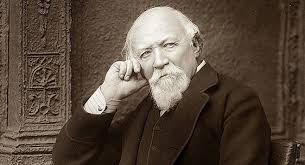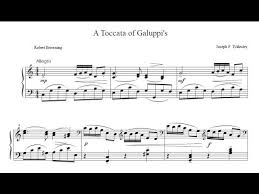A Toccata of Galuppi’s is one of the most complex poems from the 1855 poetry collection of Robert Browning- Mean and Women. The poem discusses the position of art in the society and the true purpose of an artist through a discussion of a toccata, a piece of music by Venetian musician Baldassare Galuppi.
The speaker of this poem is playing or listening to a toccata by the musician that he must have composed during the 18th century. While listening to the musical piece, the speaker muses about the intention of the artist and the way a work of art can make people feel.
He compares these feelings with the reality of the world and questions the true purpose of any art- a dilemma that Browning must have been experiencing himself as a poet.

A Toccata of Galuppi’s Summary
The speaker of the poem addresses Galuppi directly in the opening line of the poem and expresses that he feels sad when he listens to the opening notes of the toccata. Soon, the music changes and he starts to feel happier. This strong emotion transports the speaker to Venice at a time of Galuppi, even though he explains that he has never stepped out of England.
He imagines a pair of lovers who might be listening to the toccata by the seaside in Venice. He starts to comprehend their feelings as they were listening to it and assumes that they would be happy to listen to it in the beginning. The happiness is partially from the beautiful landscape that they are experiencing in each other’s company.
However, not long after this, the speaker thinks that the lovers might feel sad in the middle of toccata and question their mortal nature. The lovers engage in a deep conversation about this in the imagination of the speaker and conclude that they are happy to be together and might stay like that as soon as they live.
With this thought, the speaker questions the reality. He exclaims that it does not matter how many people have felt happiness and immortality by listening to the toccata because eventually, the truth is that all of them are dead now. This thought frightens him and he is transported back to his own sorrow and misery. In the end, the speaker expresses that he feels chilly and old.

A Toccata of Galuppi’s Analysis
Through his speaker in the poem, Browning raises a very important question about the nature of art and its position in the reality of human life. The speaker of the poem feels sad, then grows happy and finally, as the toccata concludes, looses that happiness again. The lovers, on the contrary, are happy, then become sad and finally get happy again.
This emotional journey of the speaker and the imaginary lovers is embedded by another important fact. The lovers are no more alive, while the speaker sits, enjoying the toccata. This realization of the speaker presents a number of vital questions that Browning must have aimed to address through it.
Browning, through his speaker, questions the purpose of art. He asks if art is supposed to make people happy by making them forget the pain and suffering in the world? Or is it supposed to make people realize the fact that everything is going to end one day?
Browning provides no real answer to the question. However, he places a great deal of value on the fact that death is going to come for all human beings. The irony of the music of Galuppi is that he allows people to escape the reality of death, which is inevitable otherwise. Maybe what Browning wants his readers to understand is the fact that true art is subjective to the interpretation of the observer but the objective of the artist, in his opinion, remains unclear.
A Toccata of Galuppi’s Rhyme Scheme
The form of the poem is a very important aspect of it. Browning has divided this poem into 15 rhyming triplets and each line is composed in an octometer. This rare form is very difficult to achieve, but Browning has done it with mastery and perfection.
This form attributes a unique rhythm to the poem which feels like Browning is composing an equivalent of the toccata himself. The form used by him highlights the fact that maybe the efforts of Browning to understand the meaning of the music of Galuppi is an indirect attempt to determine the fate of his own work and reputation as a poet.
He reminds the reader through his words and rhyme that however beautiful any art or human life is, it is doomed to die one day.
You can read the complete poem A Toccata of Galuppi Browning in PDF fomat.